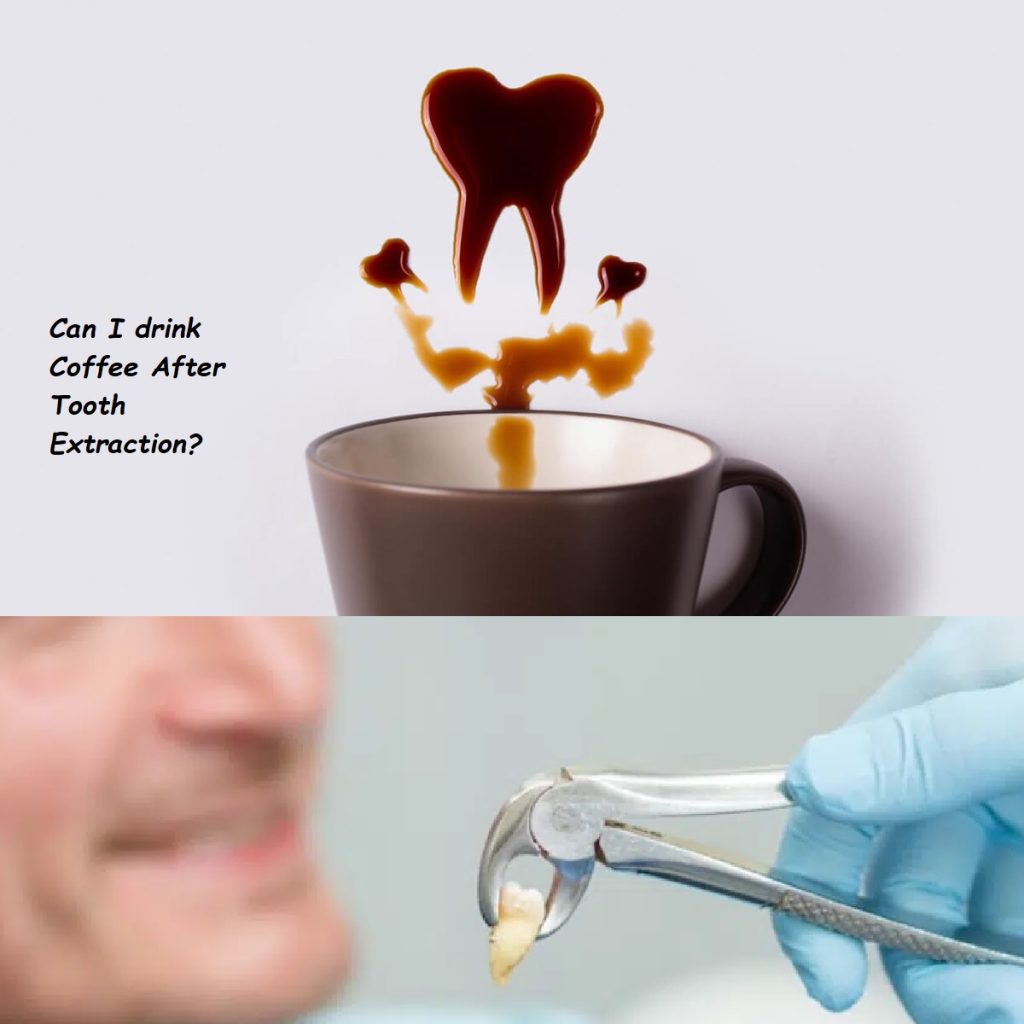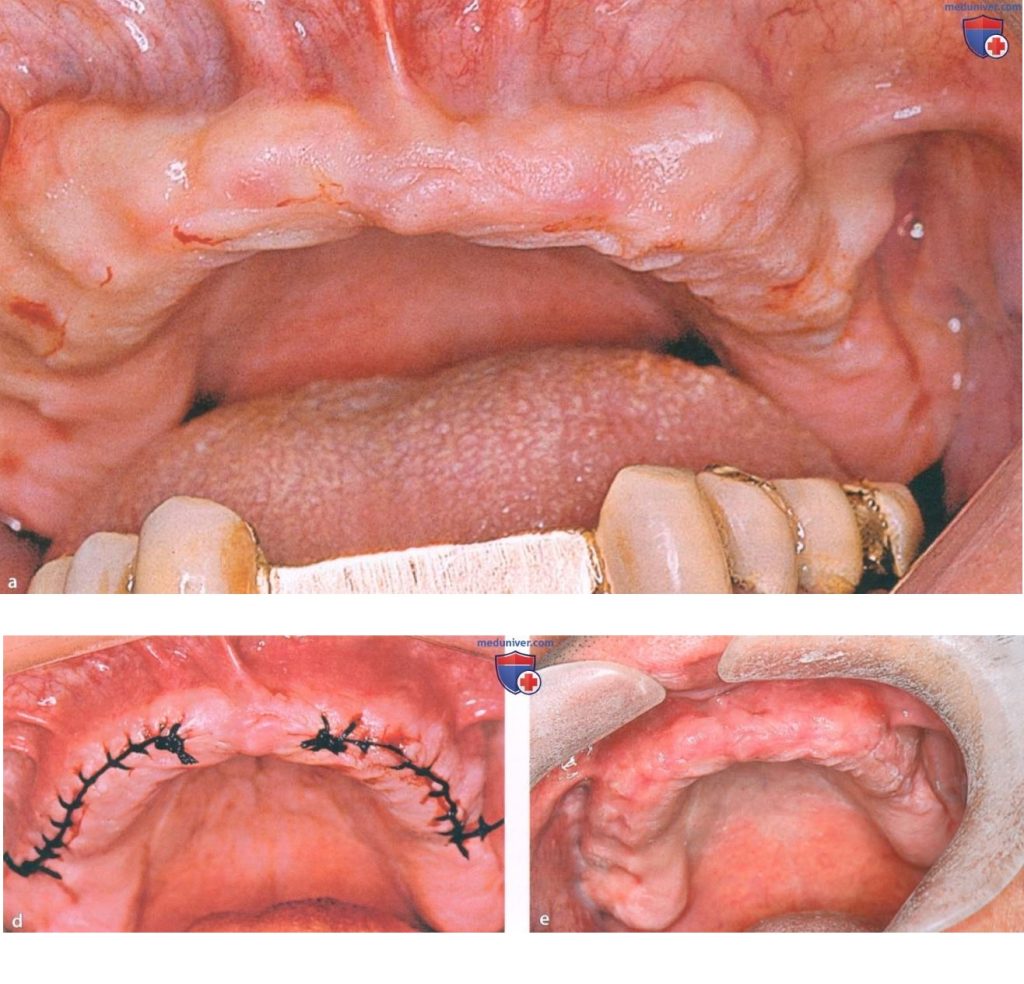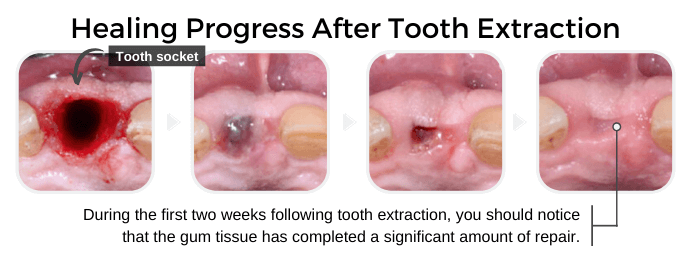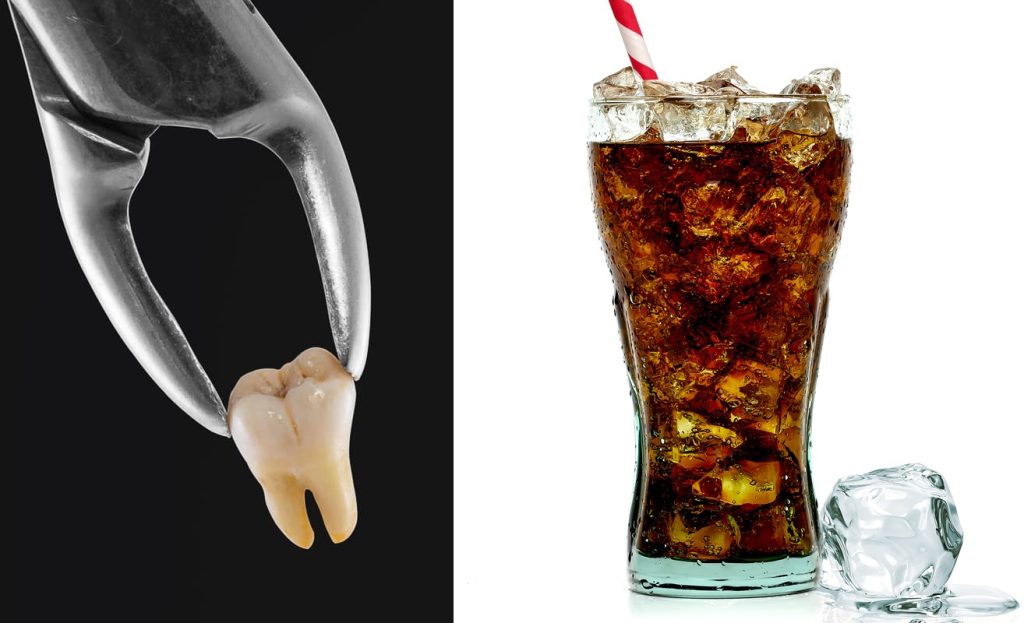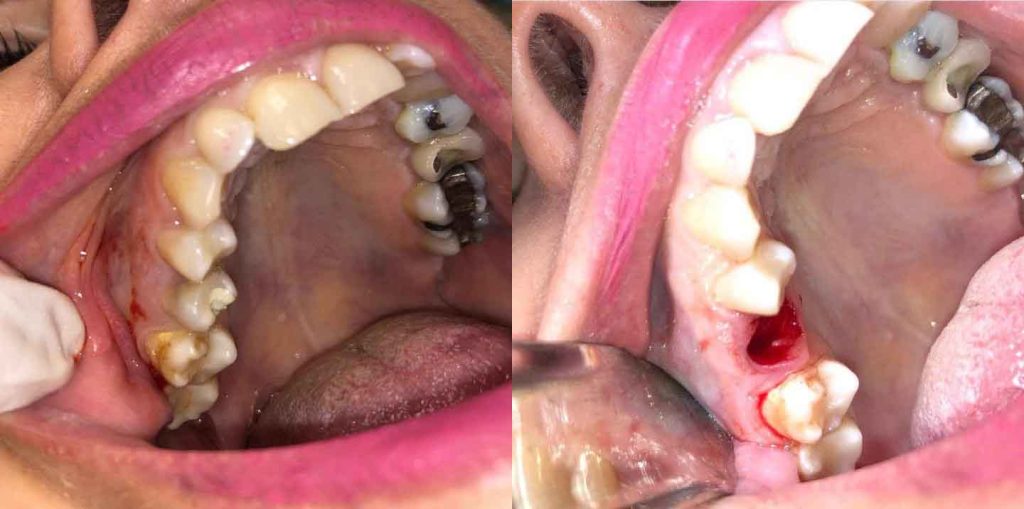when can i use a straw after tooth extraction

Tooth extraction is a common dental procedure necessary for various reasons, such as severe decay, infection, or overcrowding. Proper post-operative care is essential for ensuring a smooth recovery and preventing complications. One frequently asked question is, “When can I use a straw after tooth extraction?” This comprehensive guide aims to answer this question in detail, providing valuable information on why using a straw can be risky, the recommended timeline for straw use, and additional tips for optimal healing.

Understanding Tooth Extraction and the Healing Process
Before delving into when you can use a straw after tooth extraction, it’s important to understand what happens during and after the procedure.
The Extraction Procedure
Tooth extraction involves removing a tooth from its socket in the jawbone. There are two main types of extractions:
- Simple Extraction: Performed on visible teeth under local anesthesia.
- Surgical Extraction: Required for teeth that are not easily accessible, often necessitating general anesthesia.
The Healing Process
The healing process after tooth extraction involves several stages:
- Blood Clot Formation: Immediately after the extraction, a blood clot forms in the socket, which is essential for protecting the underlying bone and nerves.
- Initial Healing (24-48 Hours): The blood clot begins to stabilize, and the surrounding tissues start to heal.
- Granulation Tissue Formation (First Week): New tissue forms, filling in the socket and beginning the healing process.
- Bone and Tissue Remodeling (Several Weeks to Months): The body continues to repair the bone and tissue, gradually closing the extraction site.

Why Using a Straw After Tooth Extraction Can Be Risky
Using a straw after tooth extraction can pose several risks, primarily related to the disruption of the healing process. Here’s why it’s important to avoid straws during the initial recovery period:
Suction and Blood Clot Dislodgment
The primary concern with using a straw after tooth extraction is the suction created when drinking. This suction can dislodge the blood clot that forms in the socket, leading to a painful condition known as dry socket.

Dry Socket: A Painful Complication
- What is Dry Socket?: Dry socket occurs when the blood clot is dislodged or dissolves before the wound has fully healed, exposing the underlying bone and nerves.
- Symptoms: Severe pain, bad breath, and an unpleasant taste in the mouth are common symptoms of dry socket.
- Treatment: Dry socket requires professional treatment, which may include cleaning the socket and applying a medicated dressing.
When Can I Use a Straw After Tooth Extraction?
The question “when can I use a straw after tooth extraction” varies depending on several factors, including the complexity of the extraction, individual healing rates, and your dentist’s specific instructions. Here’s a detailed timeline to help you understand what to expect:
The First 24 Hours
- Avoid Straws Completely: During the first 24 hours after tooth extraction, it is crucial to avoid using straws entirely. The blood clot that forms in the socket is delicate and can be easily dislodged by suction.
24 to 48 Hours Post-Extraction
- Continue to Avoid Straws: It is generally recommended to continue avoiding straws for at least 48 hours after the extraction. This period is critical for the stability of the blood clot and the initial healing process.
48 Hours to One Week Post-Extraction
- Monitor Healing: After 48 hours, you can begin to monitor the healing process more closely. If there are no signs of complications, such as excessive bleeding or pain, you can gradually start reintroducing certain activities. However, it’s still best to avoid using straws during this time.
One Week and Beyond
- Reintroducing Straws: Most dentists recommend waiting at least one week before using a straw after tooth extraction. By this time, the blood clot should be more stable, and the risk of dry socket significantly reduced. However, it is always best to follow your dentist’s specific instructions and use caution.
Alternative Drinking Methods During Recovery
Understanding when you can use a straw after tooth extraction also involves finding alternative methods to stay hydrated and consume liquids without risking your healing process. Here are some tips:
Sip Directly from a Glass
- Sipping Carefully: Drink directly from a glass or cup, taking small sips to avoid spilling and ensuring that you don’t create suction in your mouth.
Use a Spoon
- Controlled Intake: Using a spoon to drink can help you control the amount of liquid you consume at once, reducing the risk of disturbing the blood clot.
Drink Smoothies and Shakes with a Spoon
- Avoiding Suction: If you enjoy smoothies or protein shakes, consume them with a spoon instead of a straw to avoid suction.
Managing Other Aspects of Post-Extraction Care
While knowing when you can use a straw after tooth extraction is important, there are other crucial aspects of post-operative care to consider for optimal healing:
Diet
- Soft Foods: Stick to a diet of soft foods such as yogurt, mashed potatoes, applesauce, and scrambled eggs during the initial healing period.
- Hydration: Drink plenty of water to stay hydrated, but avoid using a straw.
- Avoid Hard and Crunchy Foods: Foods like nuts, chips, and raw vegetables can disturb the extraction site.
Oral Hygiene
- Gentle Brushing: Continue to brush your teeth gently, avoiding the extraction site. Use a soft-bristled toothbrush and fluoride toothpaste.
- Saltwater Rinse: Rinse your mouth gently with a saline solution or prescribed mouthwash, avoiding vigorous swishing or spitting.
Pain Management
- Medication: Take prescribed or over-the-counter pain medications as directed by your dentist.
- Cold Compress: Apply a cold compress to the outside of your cheek for 15-20 minutes at a time to reduce swelling and numb the area.
How to manage pain after tooth extraction
Preventing Dry Socket
Preventing dry socket is crucial for a smooth recovery. Here are additional tips to help minimize the risk:
Avoid Tobacco
- No Smoking: Smoking can significantly increase the risk of dry socket. Avoid smoking for at least 72 hours after the extraction.
Avoid Spitting
- Gentle Rinsing: Rinse your mouth gently without spitting forcefully, which can disturb the blood clot.
Follow Your Dentist’s Instructions
- Post-Operative Care: Adhere to all post-operative care instructions provided by your dentist, including dietary restrictions, oral hygiene practices, and activity limitations.
Signs of Complications
Knowing when you can use a straw after tooth extraction also involves being aware of signs that may indicate complications. Here are some symptoms to watch for and when to seek professional help:
Excessive Bleeding
- Persistent Bleeding: If bleeding continues beyond 24 hours or is excessively heavy, contact your dentist immediately.
- Large Clots: Passing large blood clots or experiencing significant bleeding warrants a call to your dentist.
Infection
- Symptoms: Signs of infection include increased pain, swelling, redness, and discharge from the extraction site.
- Fever: A fever may indicate an infection that requires prompt medical attention.
Dry Socket
- Symptoms: Severe pain, bad breath, and an unpleasant taste in the mouth may indicate dry socket. Contact your dentist for evaluation and treatment if you suspect dry socket.
Common Complications of Tooth Extraction
Long-Term Oral Health After Tooth Extraction
Maintaining good oral health after a tooth extraction is essential for preventing future dental issues. Here are some tips for long-term care:
Regular Dental Check-Ups
- Frequency: Visit your dentist every six months for regular check-ups and cleanings.
- Early Detection: Regular visits allow for early detection and treatment of potential issues.
Good Oral Hygiene Practices
- Brushing: Brush your teeth at least twice a day with fluoride toothpaste.
- Flossing: Floss daily to remove plaque and food particles between teeth.
- Mouthwash: Use an antiseptic mouthwash to reduce bacteria and freshen breath.
Healthy Lifestyle Choices
- Diet: Eat a balanced diet rich in fruits, vegetables, lean proteins, and whole grains. Limit sugary foods and drinks.
- Hydration: Drink plenty of water to keep your mouth moist and support overall health.
- Avoid Tobacco: Quit smoking and avoid all forms of tobacco to protect your oral and general health.
Tooth Extraction Complete guide to understand the process
Frequently Asked Questions
1. How long should I avoid using a straw after tooth extraction?
Most dentists recommend waiting at least one week before using a straw after tooth extraction to ensure the blood clot is stable and reduce the risk of dry socket.
2. Can I drink through a straw if I’ve had multiple extractions?
Regardless of the number of extractions, you should avoid using a straw for at least one week to prevent complications such as dry socket.
3. What are the alternatives to using a straw after tooth extraction?
Drink directly from a glass or cup, use a spoon, or consume smoothies and shakes with a spoon to avoid suction and protect the blood clot.
4. How can I tell if I have a dry socket?
Symptoms of dry socket include severe pain, bad breath, and an unpleasant taste in the mouth. If you suspect dry socket, contact your dentist for evaluation and treatment.
5. When can I resume normal activities after tooth extraction?
Most people can resume normal activities within a day or two, but it’s important to avoid strenuous activities for the first 48-72 hours to prevent increased bleeding and swelling.
Conclusion
Understanding when you can use a straw after tooth extraction is crucial for a smooth and complication-free recovery. By following the guidelines provided in this comprehensive guide, you can ensure proper healing and minimize the risk of complications such as dry socket. Remember to follow your dentist’s specific instructions, maintain good oral hygiene, and monitor for any signs of complications. With proper care and attention, you’ll be on your way to a swift and successful recovery.
How Long After Having a Tooth Pulled Can You Use a Straw?
Using a straw after a tooth extraction is generally discouraged due to the risk it poses to the healing process. The main concern is that the suction created by using a straw can dislodge the blood clot that forms in the extraction site. This clot is crucial for proper healing, as it protects the underlying bone and nerve endings. If the clot is dislodged, it can lead to a painful condition known as dry socket. Here’s a detailed guide on when it’s safe to use a straw after a tooth extraction and how to avoid complications:
Immediate Post-Extraction Period:
- First 24 to 48 Hours: Avoid using a straw during the first 24 to 48 hours following the extraction. This period is critical for the formation and stabilization of the blood clot. The suction from a straw can easily dislodge this clot, leading to complications.
- Alternative Hydration Methods: Instead of using a straw, drink directly from a glass or use a spoon to consume liquids. Lukewarm or cool beverages are recommended to avoid irritation to the extraction site.
After the First 48 Hours:
- Evaluating Healing Progress: By the second or third day, the initial healing phase is usually underway. However, the extraction site remains sensitive, and the risk of dislodging the clot is still present. Continue to avoid using a straw to minimize any risk.
- Soft Foods and Hydration: During this period, focus on consuming soft foods and staying hydrated without using a straw. Options like yogurt, smoothies (without a straw), and applesauce are good choices.
After the First Week:
- Gradual Resumption: Around the one-week mark, you may start to cautiously reintroduce the use of a straw, depending on how well the extraction site is healing. Consult your dentist for personalized advice based on your specific situation.
- Monitoring for Complications: If you experience any increased pain, swelling, or signs of dry socket, discontinue using a straw immediately and contact your dentist.
Additional Considerations:
- Signs of Dry Socket: Symptoms of dry socket include severe pain that radiates to the ear, bad breath, and an empty-looking socket. If you suspect dry socket, seek professional help promptly.
- Proper Oral Hygiene: Maintain good oral hygiene to support healing. Gently brush your teeth, avoiding the extraction site, and use any prescribed mouthwash or saline solution as directed.
Long-Term Care:
- Complete Healing: Full healing of the extraction site can take several weeks to a few months. Continue to avoid activities that could disrupt the healing process, including vigorous rinsing, spitting, and using a straw, until your dentist confirms it is safe.
By following these guidelines and being mindful of the healing process, you can avoid complications and ensure a smooth recovery after a tooth extraction.
How Long After Tooth Extraction Can I Exercise?
Exercising after a tooth extraction requires careful consideration to avoid complications and promote proper healing. The timeline for resuming physical activity varies depending on the complexity of the extraction, your overall health, and your dentist’s specific instructions. Here’s a comprehensive guide on when and how to safely resume exercise after a tooth extraction:
Immediate Post-Extraction Period:
- First 24 to 48 Hours: Avoid any strenuous activities, including exercise, during the first 24 to 48 hours after the extraction. This period is critical for forming and stabilizing the blood clot in the extraction site. Increased heart rate and blood pressure from physical activity can cause bleeding, swelling, and dislodgement of the clot, leading to complications such as dry socket.
- Rest and Recovery: Focus on rest and allow your body to begin the healing process. Keep your head elevated to reduce swelling and avoid bending over or lifting heavy objects.
48 Hours to One Week:
- Light Activity: After the first 48 hours, you can gradually reintroduce light physical activities, such as walking or gentle stretching, as long as they do not cause discomfort or increase your heart rate significantly. Pay close attention to your body’s signals and avoid any activities that cause pain or bleeding.
- Avoid High-Impact Exercise: Continue to avoid high-impact and strenuous exercises, such as running, weightlifting, or intense cardio, for at least the first week. These activities can increase blood flow to the extraction site, leading to prolonged bleeding and delayed healing.
One Week and Beyond:
- Gradual Resumption: After one week, if you feel comfortable and your dentist gives the go-ahead, you can start to gradually resume more strenuous activities. Begin with moderate exercise and slowly build up to your regular routine, monitoring your body for any adverse reactions.
- Listen to Your Body: Pay attention to any signs of discomfort, swelling, or bleeding. If you experience any of these symptoms, reduce your activity level and consult your dentist.
Long-Term Considerations:
- Complete Healing: Full healing of the extraction site can take several weeks to a few months, depending on the individual and the complexity of the extraction. Even after resuming exercise, continue to avoid activities that put excessive strain on your body or pose a risk of injury to the mouth.
- Proper Oral Care: Maintain good oral hygiene practices, including gentle brushing and rinsing with a saline solution, to support the healing process. Avoid smoking and alcohol, as they can impair healing and increase the risk of complications.
Signs to Watch For:
- Persistent Bleeding: If you notice continued bleeding after exercise, stop immediately and contact your dentist. This may indicate that the extraction site has been disturbed and requires attention.
- Increased Pain or Swelling: If you experience increased pain or swelling during or after exercise, reduce your activity level and consult your dentist for guidance.
By following these guidelines and listening to your body, you can safely resume exercise after a tooth extraction and support a smooth and successful recovery.
References:
Post-operative Instructions for Extractions/Oral Surgery



